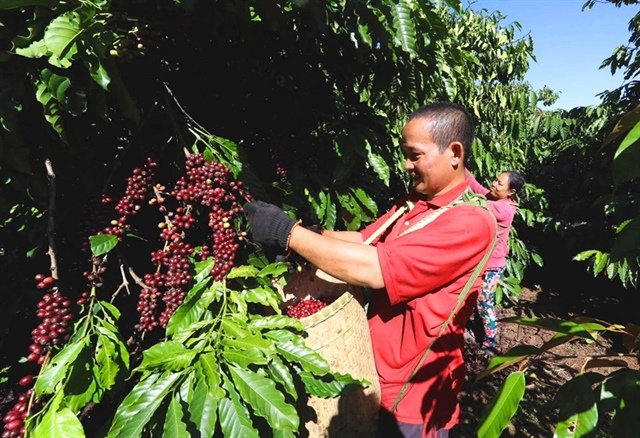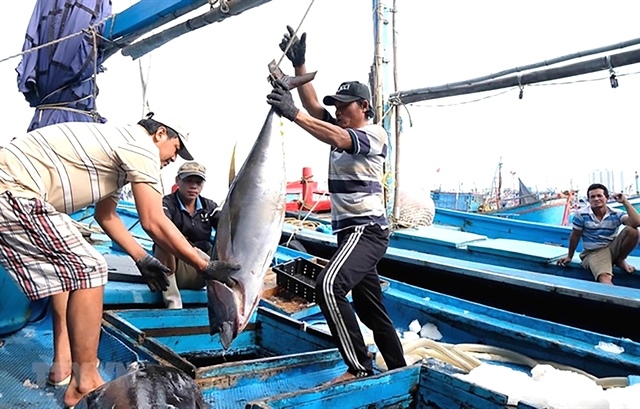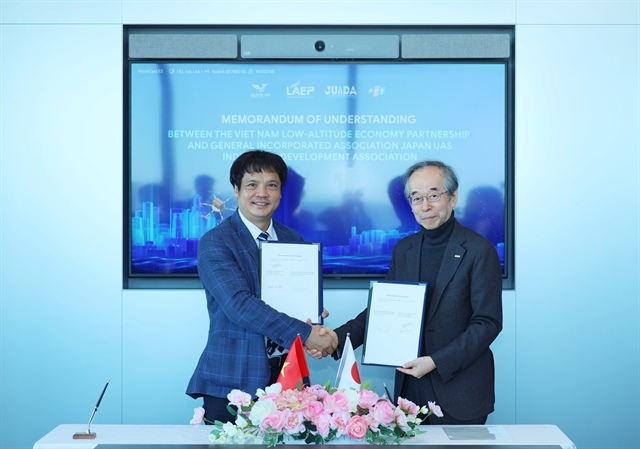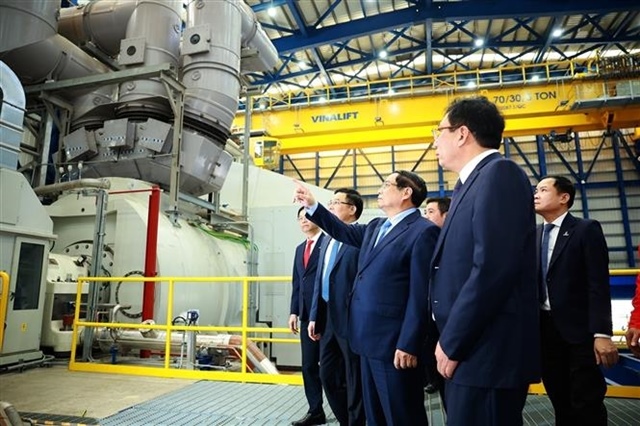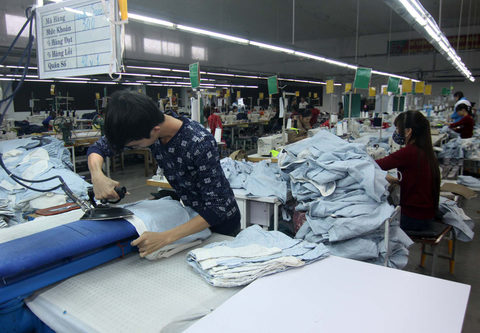Auto manufacturer Truong Hai hopes for policies to protect domestic industry
Auto manufacturer Truong Hai hopes for policies to protect domestic industry
As the 2018 deadline to remove tariffs on completely built cars imported from the ASEAN bloc looms, domestic auto manufacturers are banking on the possibility that the government will have some measures to control imports of completely built cars.
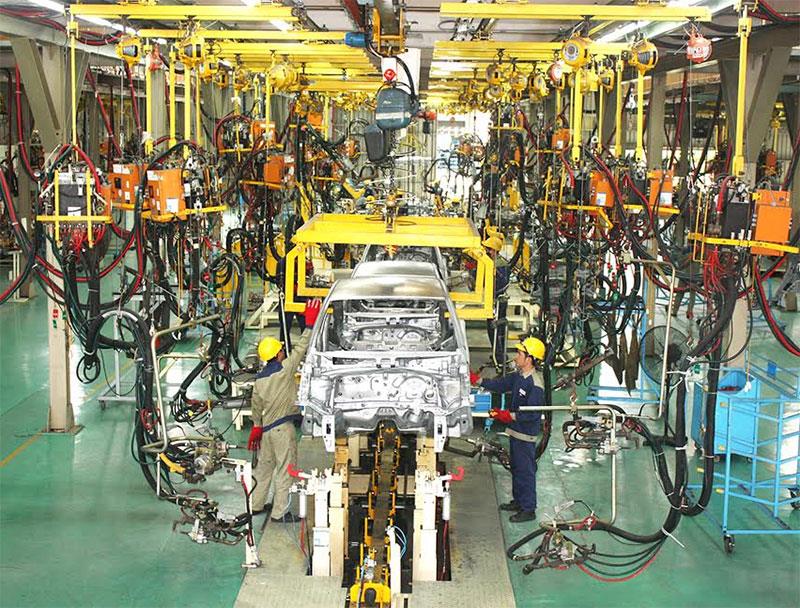
"When there are sound development policies, including controlling imports of completely built cars and protecting domestic assembling and manufacturing industries, and when the domestic market is big enough, the automobile industry will bring huge economic, societal, and technological gains,” said Tran Ba Duong, chairman of the board of directors of Truong Hai Auto Corporation.
In 2018, as part of its commitments under the ASEAN Economic Community, Vietnam will remove all tariffs on completely built cars imported from the ASEAN. The domestic automobile industry has only a year to gear up for the expected competition.
“If policies are unclear, many car manufacturers and assembly plants will switch over to importing. And when the domestic car market explodes, completely built units will be imported to meet the demand, causing significant trade deficit. The automobile, mechanical, and other supporting industries will fail to meet their objectives, and society will be affected as workers lose their jobs,” Duong added.
In its expansion plan of Chu Lai-Truong Hai Complex for 2016-2018, Truong Hai plans investing nearly $1.4 billion to expand or build new car and part manufacturing plants as well as research and development centres. According to design, by 2018 the complex will have eight assembly plants, 19 supporting industrial plants, five logistical companies, and several other service companies, which will employ 150,000 workers compared to the 60,000 today.
Duong said the company has invested a total of $1.4 billion from 2002 to October 2016 in five lines of vehicles, including buses, trucks, and cars carrying the Mazda, Kia, and Peugeot brands.
“We picked international brands that had no plants in the ASEAN or are hoping to expand in the region. We want to target both the Vietnamese and foreign markets,” he said.
Amidst the disconcerting uncertainty, another automaker is also expanding production. Huyndai Thanh Cong Auto Company and South Korean Hyundai Corporation have just reached an agreement on establishing an auto assembly joint venture in the northern province of Ninh Binh. The JV will operate manufacturing activities, while Hyundai Thanh Cong will continue to run the distribution, according to Le Ngoc Duc, general director at Hyundai Thanh Cong.
The deal will bring a $450-million auto manufacturing cluster to Ninh Binh that will employ 8,000 workers to make Hyundai cars for both the domestic and foreign markets.
Many car producers in Vietnam are hesitant to make large investments because the import tariff on car parts is currently at 10-30 per cent and there is no sign of an upcoming change. The sentiment persists despite the oncoming erasal of import tariff on completely built units in 2018.
“If the government leaves companies to fend for themselves, they may go bankrupt. When they stop operations, there will be no domestic jobs and imports will dominate,” said Truong Trong Nghia, a National Assembly deputy of Ho Chi Minh City.
Car sales reached a record in 2015 with 245,000 units, an increase of 55 per cent from 2014, according to data compiled by the Vietnam Automobile Manufacturers’ Association (VAMA). Total sales as of October, 2016 also went up 30 per cent on-year.
Imports are also on the rise. Imports of completely built cars in the first ten months of this year were up 22 per cent on-year. With taxes lowered to zero in 2018, this trend might snowball.
Thanks to a growing middle class, the Vietnamese car market is promising, both to domestic and foreign carmakers. However, it remains to be seen whether Vietnam could benefit from this demand.
There is heavy competition to attract auto manufacturers within the ASEAN, with some countries far ahead of Vietnam.
After 50 years of development, the Thai auto industry now consists of 17 auto assembly companies and up to 2,400 domestic and foreign supporting companies. Vietnam, by comparison, has 13 auto manufacturing and assembly companies but only 160 firms providing parts.
With a population of 60 million people – far smaller than Vietnam’s – Thailand’s annual output of 2.1-2.4 million cars is in the world’s top 10, far exceeding the 200,000-300,000 cars per year produced in Vietnam.
Malaysia and Indonesia are also vying for a larger share of the business. The Indonesian auto industry is growing 20 per cent on annum, selling over 1.2 million cars in 2013. It considers automobiles a core industry in its 2011-2015 economic masterplan, known as MP3EI. Meanwhile, Malaysia has created its own range of car brands.
The Philippines, on the other hand, offers a lesson to the contrary. Lacking government support, its auto industry with an output of 200,000 cars per year was squeezed by imports, as low taxes on completely built cars from the ASEAN and its trading partners forced companies to switch from manufacturing.


